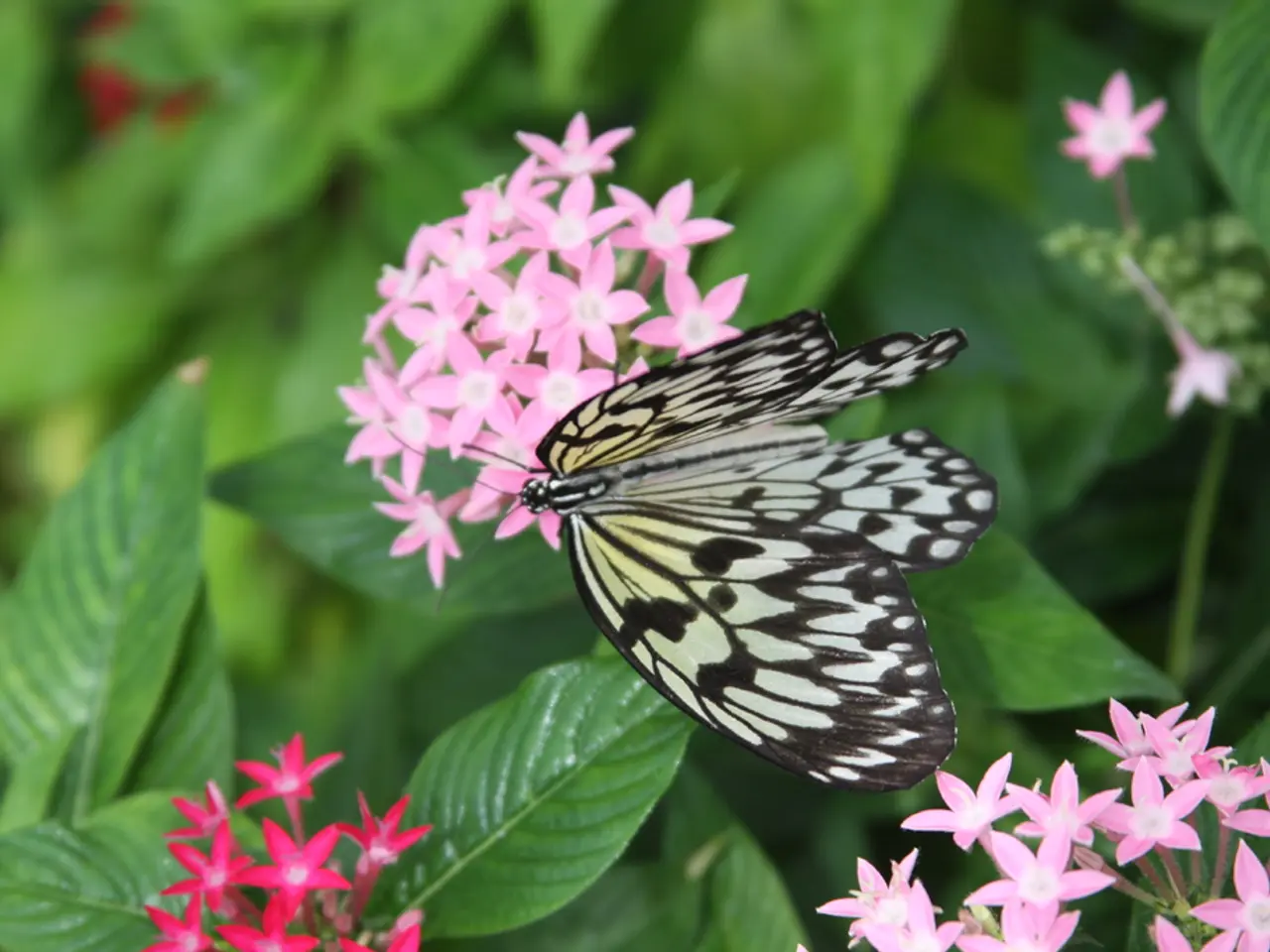Enticing Butterflies into Your Backyard Haven
Creating a Butterfly-Friendly Garden: A Comprehensive Guide
Butterflies are captivating creatures that bring a touch of beauty to any garden. To attract these vibrant pollinators, it's essential to provide the necessary conditions for them to thrive. Here's a comprehensive guide to help you create your own butterfly garden.
Essential Needs for Butterflies
Butterflies require several essential elements to survive and flourish. They need nectar-rich flowers for food, host plants for their caterpillars, shelter for roosting, and safe water sources for drinking. Additionally, they need sunlight to regulate their body temperature.
Choosing the Right Plants
Nectar Plants
Butterflies are drawn to flowers that exhibit colours like pink, red, orange, white, yellow, and purple[1]. It's also beneficial to include plants that provide continual blooms throughout the growing season [1]. To attract a variety of butterfly species, consider incorporating native flowers specific to your region, as they are more likely to attract local species [1][3].
Host Plants
Different butterfly species have specific caterpillar host plants. For instance, monarch butterflies require milkweed, while swallowtails need plants like dill or fennel[3].
Providing Shelter
Butterflies need shelter for roosting. Log piles can provide shelter for butterflies and moths [2]. Leaf litter should be left intact as some species overwinter in it [2]. Consider adding native hedges for additional shelter [2]. Allow part of your garden to grow wild, creating a mini meadow with native grasses and flowers [2].
Providing Food
In addition to flowers, you can use sugar or yeast-based baits with items like rotting fruit, white sugar, molasses, and even beer placed on rocks or stumps [1]. Offer slices of ripe fruit and banana skins for extra nutrition [2].
Avoiding Pesticides
Refrain from using pesticides, which can harm butterflies and other beneficial insects. Instead, adopt organic gardening practices [5]. Use natural pest control methods like attracting beneficial insects or manually removing pests [5].
By following these guidelines, you can create a welcoming and thriving environment for butterflies in your garden. Some plants that ensure a steady supply of nectar for butterflies include Pentas, cosmos, lantana, petunias, and zinnias [4]. Goldenrod produces fragrant flowers teeming with pollen, but it is often mistaken for the allergen ragweed [1]. Aster flowers are the perfect food source for butterfly larvae [1]. Planting dense shrubs and bushy flowering plants can serve as a pit stop for tired butterflies [2]. Monarch butterflies love milkweed because the toxins in these plants discourage predators [3].
References: [1] The Spruce, (2021), How to Attract Butterflies to Your Garden [2] National Wildlife Federation, (n.d.), How to Create a Butterfly Garden [3] Butterflies and Blooms, (n.d.), Plants for Butterflies [4] Monarch Watch, (n.d.), Plants for Monarchs [5] Xerces Society, (n.d.), Butterfly Garden
- To enhance your home-and-garden lifestyle and create a more charming environment, consider implementing the tips from the comprehensive guide on creating a butterfly-friendly garden, selecting nectar-rich flowers like pentas, cosmos, lantana, petunias, and zinnias to attract various butterfly species.
- In addition to incorporating a variety of caterpillar host plants such as milkweed for monarch butterflies and dill or fennel for swallowtails, providing shelter like log piles and native hedges will contribute to the home-and-garden space becoming a haven for these captivating pollinators.




